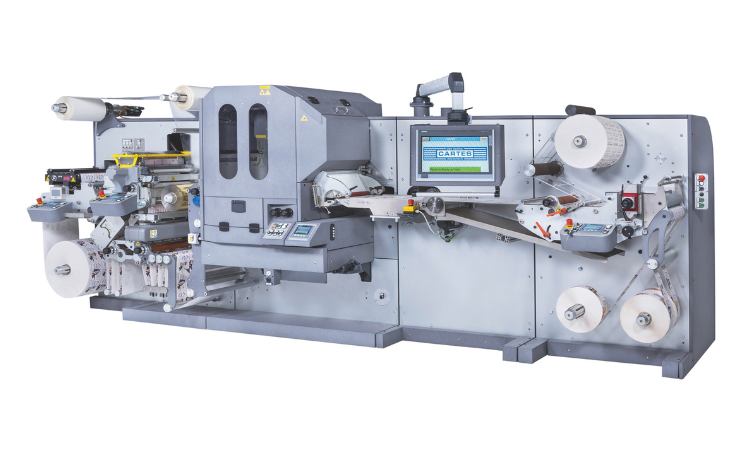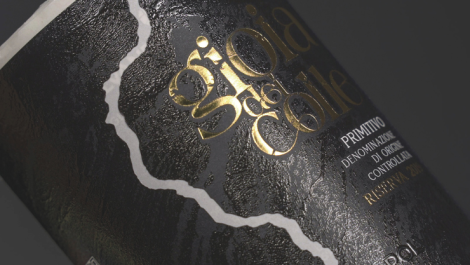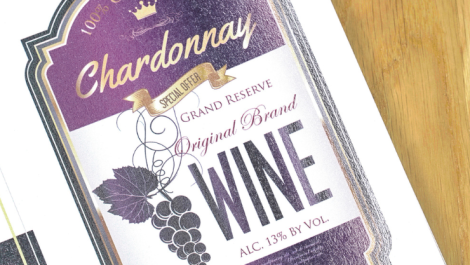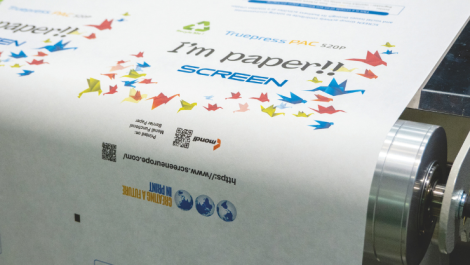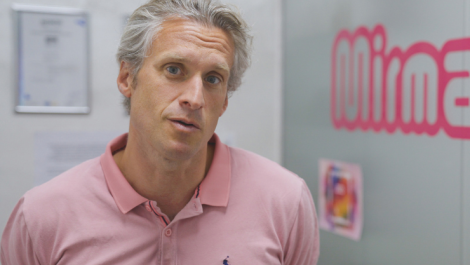Californian converter, part of Resource Label Group, establishes new levels of productivity, quality and creativity with the technology of the Italian manufacturer. By Lorenzo Villa
Paragon Label was born in Petaluma, in the San Francisco Bay, in 1999. The company is located on the border between Sonoma County and the legendary Napa Valley, the beating heart of American wine production, started in the South of the State by Spanish missionaries in eighteenth century. Starting from the 1980s, however, did Californian wines gain visibility and prestige in international markets, where they imposed themselves for their body, softness and intense aromas, which positioned them in competition with the best French, Italian and Spanish products.
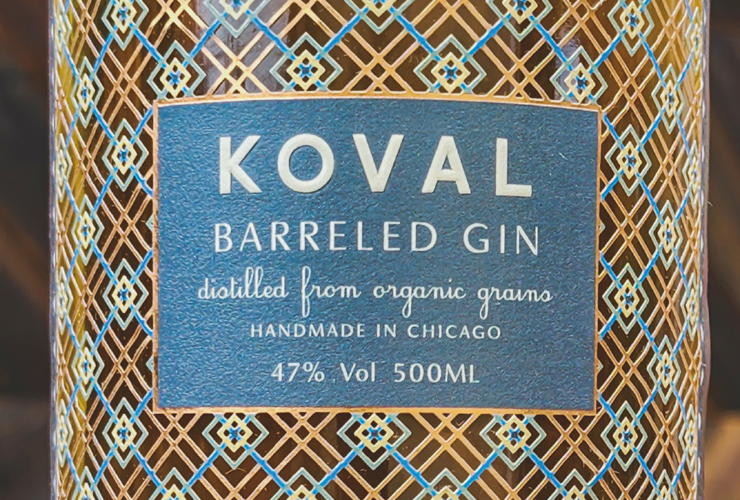
The winning labels from the 2023 and 2024 Leaf Awards,
made with Gemini GE362WL
With around 5,000 wineries, which represent 86% of national production, California is both a land of wines and f ine labels – such as those created by Paragon Label and designed by agencies specialised in packaging design for the wine sector.
For two decades, Paragon Label grows by investing in increasingly sophisticated technologies, embracing digital printing, testing the most precious papers, and exploring all possible opportunities in the field of finishing.
In 2018, thanks to its verticality in the field of wine and spirits, unique professionalism and a consolidated and prestigious clientele, the company became part of Resource Label Group, the third largest label producer in the United States.
Finally, in 2023, to streamline on-demand processing and create new levels of decoration, Paragon Label introduced a Cartes Gemini GE362WL laser die-cutting system, with which it conquered new market segments.
Traditional and digital technology for demanding customers and designers
The wine label market is subject to fashions and trends more than others. In fact, wine producers compete to make bottles more attractive, both in terms of design and finishing. To satisfy its most demanding customers, Paragon Label has always invested in differentiating technologies and studied original combinations of supports, printing techniques and special effects.
‘Wineries are always looking for something new to stand out from their competitors, and make their product show up on the shelf’, explains Jeremy Jolly, Operations Manager of Paragon Label. ‘Every day we talk to designers and wineries who ask us to go beyond what is possible with graphics alone.’
In its production department, the converter uses Mark Andy LP3000 and Nil Peter MO4 HD flexo printing lines with which it effectively produces labels of quality comparable to offset with runs of up to a few million pieces. Small runs are entrusted to an HP Indigo 6900 and a 6800. The finishing, however, is carried out with offline devices and with a dedicated line. The most used supports are self-adhesive by natural paper and BOPP face stock, as well as several types of films for flexible packaging.
The challenge of small series and extreme customisation
Wine producers are suffering from the growing polarisation between mass-produced products – which require premium packaging for the vast public who purchase medium/low value wines – and niche products or special editions, dedicated to a high-spending clients, in use to purchase at wine shops and restaurants.
To satisfy even the most particular needs, Paragon Label specialises in the management of small quantities, with extreme customisation and in the most refined finishings for high-end or collectible wines and spirits. Furthermore, the company has developed a selection of quality materials and introduced numbering, serialisation, die-cutting and carving techniques.
‘The orders are smaller and more fragmented. Often the wineries order the labels at the last moment, when the wine is ready to be bottled’, says Jolly. ‘If digital printing solves part of the problem, die-cutting and special processes are a bottleneck that needs to be resolved’.
Although already using laser technology, combined with other traditional decoration processing, by a great 2022, Paragon Label decides to invest in a new laser cutting technology to die-cut and ennoble labels in a more productive, efficient and precise way.
The reasons for choosing Cartes Gemini
The Paragon Label team tests multiple solutions and ultimately chooses to acquire the Cartes Gemini platform. What convinced the American converter were, first, the construction quality, the large number of machines installed, the positive feedback received from colleagues and the excellent results of the tests carried out.
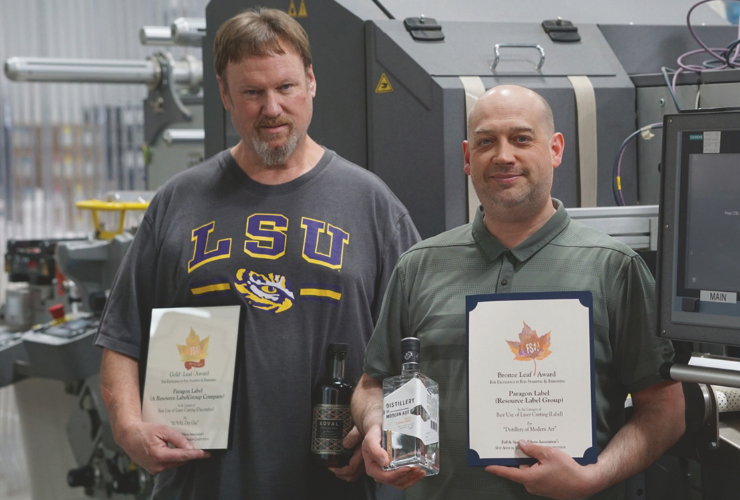
From the left: Ken Bradely and Jeremy Jolly of Paragon Label
‘We tested other technologies already in use among the 31 companies of the group, but the result obtained with Cartes went beyond expectations’, reports Jolly. ‘Gemini is a concentration of functionality and repeatability, and the possibility of having customisations is unparalleled.’
Paragon Label chooses a GE362WL configuration with corona treatment, semi-rotary flexo with over lamination and cold foil, double laser source with automatic positioning blade and turret rewinder.
Gemini is surprising for its numerous exclusive features, including ILC (Invisible Laser Cutting) technology, which allows you to make cuts without white edges even on dark materials.
Furthermore, Paragon Label is impressed by Cartes’ tailor-made approach, which offers the label manufacturer countless machine customisation options.
The ‘All-in-One’ technology to impose becomes a trendsetter
About a year after the introduction of Cartes Gemini, Paragon Label cuts small batches more effectively, without producing dies and guaranteeing its customers shorter delivery times and lower costs. Even on the commercial front, being able to quickly manage multiple jobs in sequence has allowed the Californian company to win over more medium/small customers, increasing the number of orders, turnover and margins.
Furthermore, on the application front, the company has pushed the use of laser for decorative carvings to the extreme: a process that Cartes Gemini carries out with impeccable results thanks to the extreme precision of the entire machine system.
‘Gemini has helped us create a new market, serve new customers, offer wineries decorative solutions ready for the shelf, and increase turnover’, underlines Jolly. ‘Some customers come to us after seeing the labels produced for other wineries or the samples we send them, and in most cases, they decide to entrust us with their most creative and technically challenging projects.’

